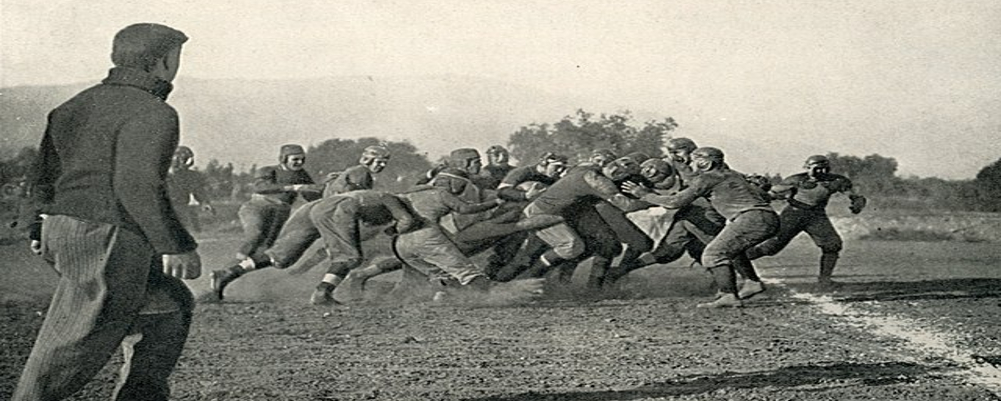Football Archaeology's Timothy Brown joins us in telling the history of the headgear emblem and its importance in football history. Tim's original Tidbit article with great images can be found at The Rise and Fall of Helmet Numbers.
You Can also find the podcast version of the discussion
In the early days of football, jerseys did not have numbers on them. Numbers were introduced to help fans and media identify players on the field. In the 1950s, with the invention of television, conferences required teams to put numbers on jerseys or helmets to better identify viewers. Since then, helmet numbers have become less important because TV screens have increased, and logos have become more popular.
From Humble Beginnings to Widespread Adoptio
While seemingly a simple design element, helmet numbers in American football play a surprisingly multifaceted role. From aiding player identification to fostering team unity and even impacting strategy, these numerals hold significance beyond mere decoration.
Helmet numbers' most basic function is clearly identifying players on the field. With multiple players wearing similar uniforms, these numbers allow coaches, referees, and spectators to distinguish between teammates and opponents. This is crucial for officiating calls, play recognition, and overall game flow.
The early days of football helmets offered little protection, let alone space for numbers. As helmets evolved in the 1930s and 40s, teams experimented with various methods of putting numbers on the outside. By the 1950s, displaying player numbers on helmets' backs became common. It provided better visibility for referees and fans, aiding in player identification.
The Rise and Fall of a Tradition
Throughout the latter half of the 20th century, player numbers on helmets remained a staple. However, several factors contributed to their decline.
In conclusion, helmet numbers in American football transcend mere decoration. They serve vital functions in player identification, fostering team spirit, and even influencing strategic decisions. As the game continues to evolve, the role of helmet numbers might expand further, offering new avenues for player expression and strategic innovation.


